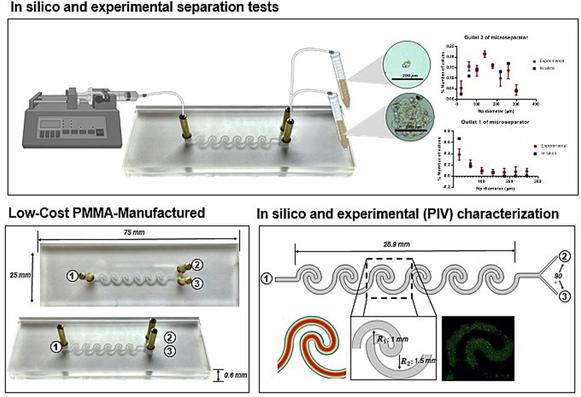Tudo sobre PMMA - Aplicações, Benefícios e Riscos https://olhaquetop.blog/tudo-sobre-pmma-aplicacoes-beneficios-e-riscos/ #BenefíciosDoPMMA, #BenefíciosERiscos, #CirurgiaPlástica, #Estética, #PMMA, #Polimetilmetacrilato, #PreenchimentoFacial, #Próteses, #RiscosDoPMMA, #TudoSobrePMMA-Aplicações
#PMMA
Low-cost #OpenSource inertial #microfluidic device for #microparticle separation: A #laser-ablated #PMMA lab-on-a-chip approach without a #cleanroom:
https://doi.org/10.1016/j.ohx.2023.e00493
#DIYbio #lab #instruments #microfluidics #chitosan #LoC #COMSOL
Big LED Matrix Becomes Tiny LED Matrix Thanks to Fiber Optics
Everyone loves LED matrices, and even if you can't find what you like commercially, it's pretty easy to make just what you want. Need it big? No problem; just order a big PCB and some WS2812s. Need something tiny? There are ridiculously small LEDs that will test your SMD skills, as well as your vision.
But what if you want a small matrix that's actually a big matrix in disguise? For that, you'll want to follow [elliotmade]'s lead and incorporate fiber optics into your LED matrix. The build starts with a 16×16 matrix of WS2812B addressable LEDs, with fairly tight spacing but still 160 mm on a side. The flexible matrix was sandwiched between a metal backing plate and a plastic bezel with holes directly over each LED. Each hole accepts one end of a generous length of flexible 1.5-mm acrylic light pipe material; the other end plugs into a block of aluminum with a 35 by 7 matrix of similar holes. The small block is supported above the baseplate by standoffs, but it looks like the graceful bundle of fibers is holding up the smaller display.
A Raspberry Pi Pico running a CircutPython program does the job of controlling the LEDs, and as you can see in the video below, the effect is quite lovely. Just enough light leaks out from the fibers to make a fascinating show in the background while the small display does its thing. We've seen a few practical uses for such a thing, but we're OK with this just being pretty. It does give one ideas about adding fiber optics to circuit sculptures, though.
#ledhacks #acrylic #fiberoptics #led #lightpipe #matrix #neopixel #pico #pmma #raspberrypi #rgb #ws2812b
Fit Your LCDs with Lenses for That Vintage CRT Look
For as big, bulky, and power-hungry as they were, CRTs were an analog joy of the early days of TV, video games, and computers. The crackling high-voltage, the occasional whiff of ozone, the whizzing electrons lancing through a vacuum to excite a phosphorescent image -- by comparison, thin-film LCDs are sterile and boring.
Sadly, CRTs are getting harder to come by these days, and at the extreme ends of the size spectrum, may never have been available at all. Thankfully, if your project demands a retro CRT look, fitting your LCD with a custom lens might just do the trick. The link leads to the first article in a series by [jamhamster] on the travails of lensmaking, which even when not practiced for precision lens production can still be tricky. After going through the basics of material selection -- acrylic, but not cold-formed, please; such sheets have internal stresses that tend to express themselves as cracks while grinding. The grinding method is as ingenious as it is simple: a blank is fitted to a flat arbor and ground down by spinning it against a belt sander, on the side without the platen. A little WD40 for lubrication and thermal management helped while progressing to finer grit belts, with a final treatment using plastic polish yielded a shape very reminiscent of an old CRT face.
Further installments of the series detail the optical properties of these lenses, options for bonding them to an LCD, and tying all the steps into a coherent method. We think the results speak for themselves, and suspect that these "emulated" CRTs often draw a double-take.
<https://hackaday.com/wp-content/uploads/2021/06/lcd-crt.mp4>
Thanks to [John] for the tip.
